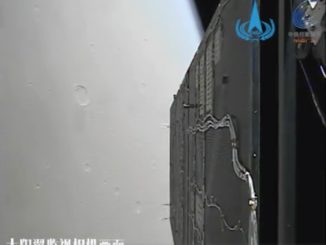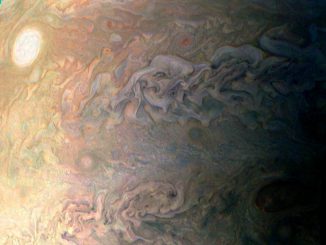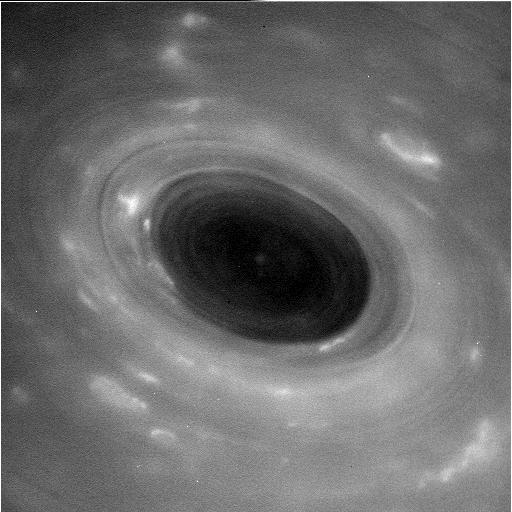
Ground controllers at NASA’s Jet Propulsion Laboratory confirmed Thursday the Cassini spacecraft survived its first trip between Saturn and its rings, the closest any probe has ever come to the planet.
Cassini was out of contact with Earth as the spacecraft passed inside Saturn’s rings at 0900 GMT (5 a.m. EDT) Wednesday, using its high-gain dish antenna as a shield against icy particles engineers feared could lurk in its path.
The spacecraft radioed home around 0700 GMT (3 a.m. EDT) Thursday, around 22 hours after zipping between Saturn’s D ring and the planet’s cloud tops at a relative speed of about 77,000 mph (124,000 kilometers per hour), fast enough to travel from New York to Los Angeles in less than two minutes.
“In the grandest tradition of exploration, NASA’s Cassini spacecraft has once again blazed a trail, showing us new wonders and demonstrating where our curiosity can take us if we dare,” said Jim Green, director of NASA’s planetary science division.
A 230-foot (70-meter) antenna at NASA’s Deep Space Network facility in Goldstone, California, received the first signal from Cassini early Thursday.
Engineers were confident the spacecraft would make the trek through the ring gap unscathed. The trajectory took Cassini around 200 miles (300 kilometers) from the visible edge of Saturn’s innermost D ring, and pictures showed no sign of any icy ring particles in the craft’s path.
Models suggested that if any particles were present where Cassini flew, they would be similar in size to microscopic smoke particles, according to NASA.
But managers took no chances with Wednesday’s flyby, pivoting the spacecraft to point its 13-foot (4-meter) radio antenna in its direction of travel to take the brunt of any debris impacts, which could have damaged or destroyed the probe.
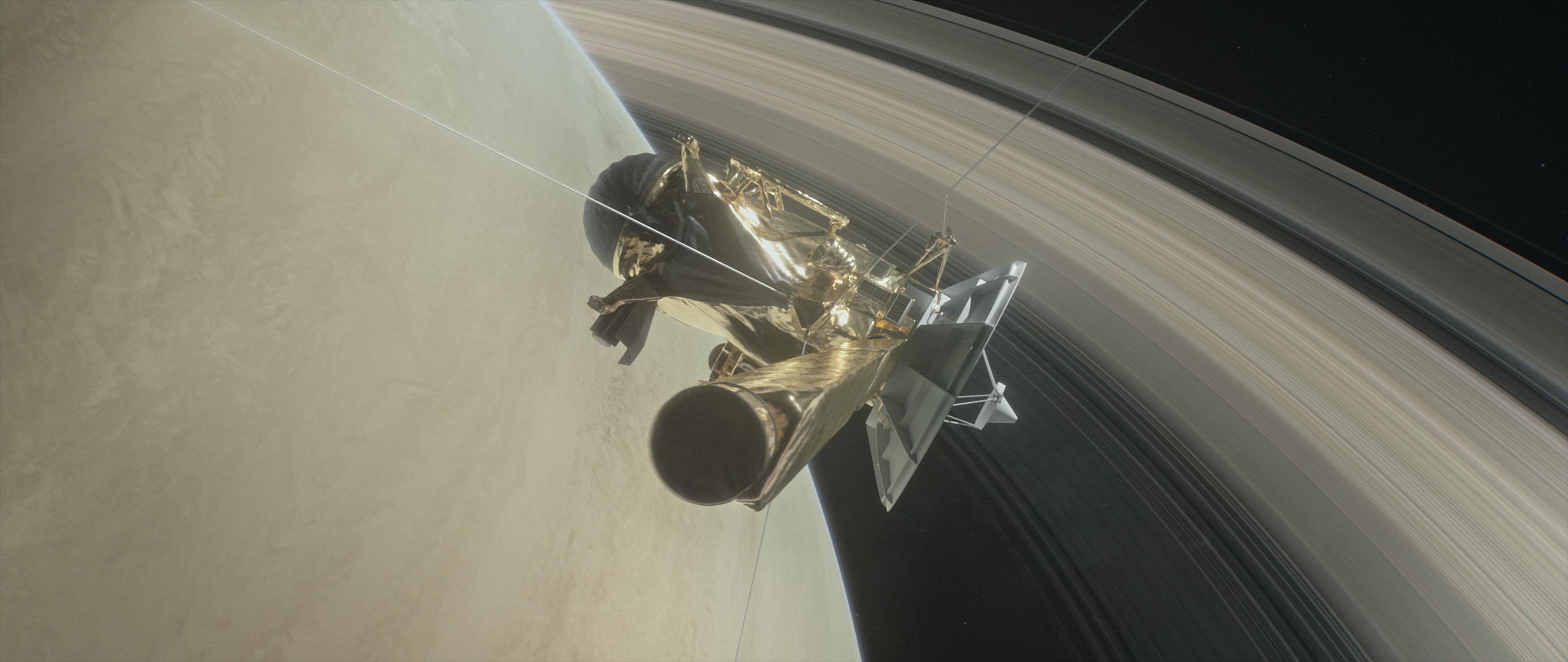
“No spacecraft has ever been this close to Saturn before. We could only rely on predictions, based on our experience with Saturn’s other rings, of what we thought this gap between the rings and Saturn would be like,” Earl Maize, Cassini project manager at NASA’s Jet Propulsion Laboratory in California. “I am delighted to report that Cassini shot through the gap just as we planned and has come out the other side in excellent shape.”
Cassini’s closest approach to Saturn came at a distance of about 1,900 miles (3,000 kilometers) from the planet’s cloud tops.
The long-lived space probe is in the final months of a 20-year mission, heading for a Sept. 15 crushing plunge into Saturn’s atmosphere as it runs on low on fuel. Cassini will make similar flights between Saturn and its rings once per week until the destructive dive in September, with the next ring passage set for May 2.
“The gap between Saturn and its rings is no longer unexplored space – and we’re going back 21 times,” NASA tweeted from the Cassini mission’s official Twitter account.
One of Cassini’s instruments, the radio and plasma wave subsystem, was programmed to collect data on the size and density of ring particles encountered by the spacecraft during Wednesday’s approach.
Other scientific objectives planned around Wednesday’s flyby included creating a high-resolution near-infrared movie of Saturn’s north pole, giving scientists their best view of the motion of a mysterious six-sided cloud pattern first observed by NASA’s Voyager probes in the early 1980s.
Cassini’s cameras were to capture a series of images of features in Saturn’s atmosphere, scientists said, returning views 10 times sharper than previously available.
Raw imagery from the Cassini cameras were downlinked to Earth early Thursday, showing parts of Saturn’s hexagonal hurricane at the north pole, and other atmospheric features.
During Cassini’s next trip near Saturn on May 2, the spacecraft’s science instruments will look at ringlets embedded within the main rings while the sun is hidden behind the planet, a viewing geometry that makes faint ring features more visible. Cassini will also conduct long-range observations of Saturn’s moon Rhea and calibrate the craft’s magnetometer for future magnetic field investigations.
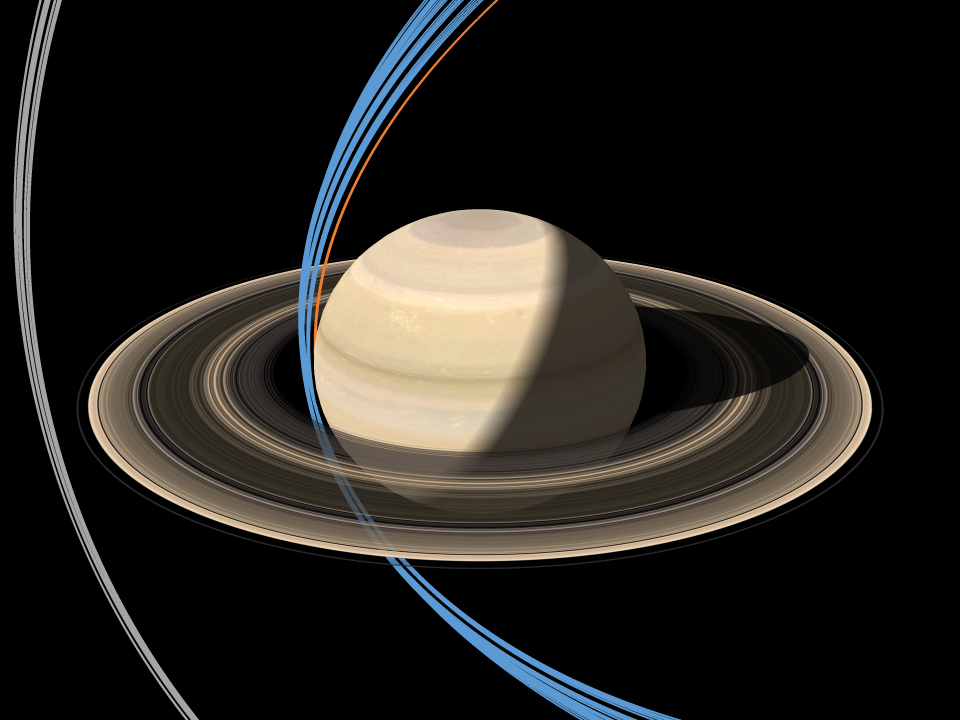
Cassini will again use its antenna as a shield on four future passes near Saturn from late May through early July when the spacecraft will come closest to the D ring, the innermost of the planet’s main rings. The exact placement of Cassini’s journey through the ring gap changes with each orbit.
Launched from Cape Canaveral on top of a Titan 4 rocket Oct. 15, 1997, the Cassini spacecraft arrived in orbit around Saturn on July 1, 2004, to begin a planned four-year tour of the planet’s moons.
NASA extended the nearly $3.3 billion Cassini mission multiple times, and officials in 2010 announced plans for the spacecraft to jump inside Saturn’s rings this year before heading into the atmosphere in September.
Cassini got a gravitational nudge from Saturn’s largest moon Titan on Saturday, reshaping the craft’s trajectory to begin flying inside the rings. Saturday’s flyby with Titan was the mission’s last opportunity to see the moon close-up.
Scientists will use Cassini’s final 22 orbits to measure the mass of Saturn’s rings for the first time, inspect the planet’s atmosphere, and derive Saturn’s interior structure by studying its gravity field.
“One of the things we can do with the rings is, in the grand finale orbits, for the first time address the question of the origin and the age of the rings,” said Linda Spilker, Cassini project scientist at JPL. “We’ll do this by measuring the mass of the rings very accurately.
“If the rings are a lot more massive than we expect, perhaps they’re old, as old as Saturn itself, and they’ve been massive enough to survive the micrometeoroid bombardment and erosion and leave us with the rings we see today,” she said. “Now, on the other hand, if the rings are less massive, perhaps they’re very young, maybe forming as little as 100 million years ago. Maybe a comet or a moon got too close, got torn apart by Saturn’s gravity and we have the rings that we see today.”
Email the author.
Follow Stephen Clark on Twitter: @StephenClark1.

